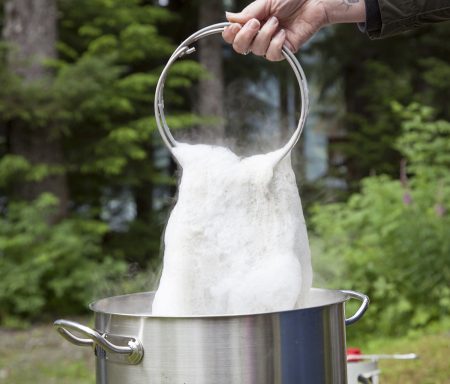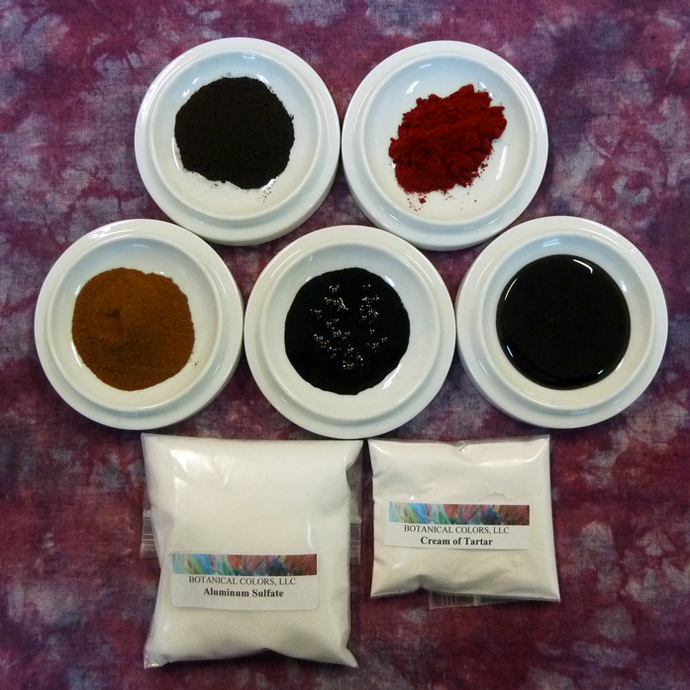Each week, we are emailed with questions from our natural dye community asking simple and complex questions that we thought might be worth sharing. Here are a handful from this week answered by natural dyer in chief, Kathy Hattori, Founder of Botanical Colors:
What do you think the shelf life of dry extracts is?
Dry extracts will last a long time. The things that cause problems with them are heat and moisture. Keep the extracts in a tightly sealed container away from heat and light and they should last you for a long time.
If a stored jar of extract has somehow turned into a gloppy, molasses-like mess, you can still use it, just not with much precision. This can be true with madder and weld extracts, and both are expensive. The easiest way to salvage these is to combine with boiling hot water to dissolve. Pour into a clean Mason jar with a canning lid, and seal finger tight. When the stock solution cools, it forms a vacuum and “preserves” the stock. Store in a cool dark place and plan to use within a week or two.
Also this may be a silly question, but I see many handy metal hoops in your photographs being used to dye yarn. What are they?
They are yarn dye rings and they are super convenient for organizing yarns, either for dyeing or for display. You can find them here.

I got organic indigo from you some time ago and started an organic 1,2,3 vat , I’m quite satisfied with color on my wool skeins, but I seem to have a problem with bleeding, I’ve rinsed and washed several times but my hands still get blue when I handle the yarn, maybe you have an idea of the reason (ph problem?) and mostly a solution to stop the bleeding.
Indigo can crock in perpetuity if it is not dyed correctly, but another problem is that the 1-2-3 vat contains a lot of sediment, which sometimes persists in dyed yarns or any fiber that has lots of areas for the sediment to hide. To prevent this, try waiting until your vat is very still and clear, and dip carefully. You can also suspend a colander in the vat to keep the yarn out of the sediment, as we described in a previous post.
When dyeing linen or cotton, is it better to use aluminum acetate or sulfate to bond the color?
There are a number of different mordant recipes, and each has its advantages.
The traditional tannin/alum (and sometimes more tannin) is a traditional mordanting method described in many dye books. It is a 2 step process: first a tannin bath, and then an alum and soda ash bath. It creates deep and rich colors with good light and washfastness. The type of tannin you use will influence the final color as tannins can impart a light “manila folder” shade, all the way to a dark tint during mordanting and this undertone will show in the dyed fibers. However, it is easy, can be done with cold water, and both the tannin bath and the alum bath may be reused several times.
Aluminum acetate is also a two-step mordanting process. You mordant first with aluminum acetate, then immerse your goods in a wheat bran bath. The wheat bran contains phosphorus, which helps brighten the aluminum acetate. It is also possible to mordant with aluminum acetate and use a calcium carbonate (chalk) after bath, but I find that it causes unevenness in dyeing.

